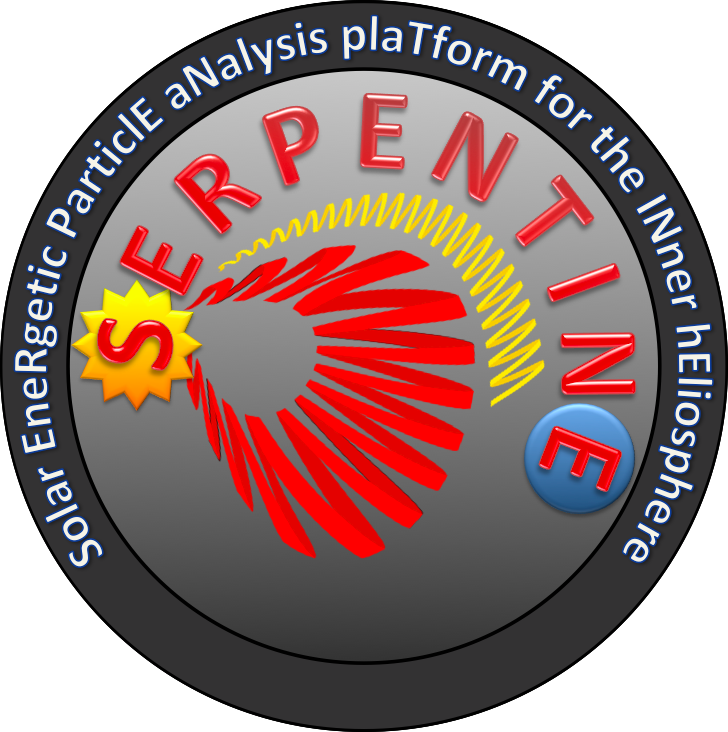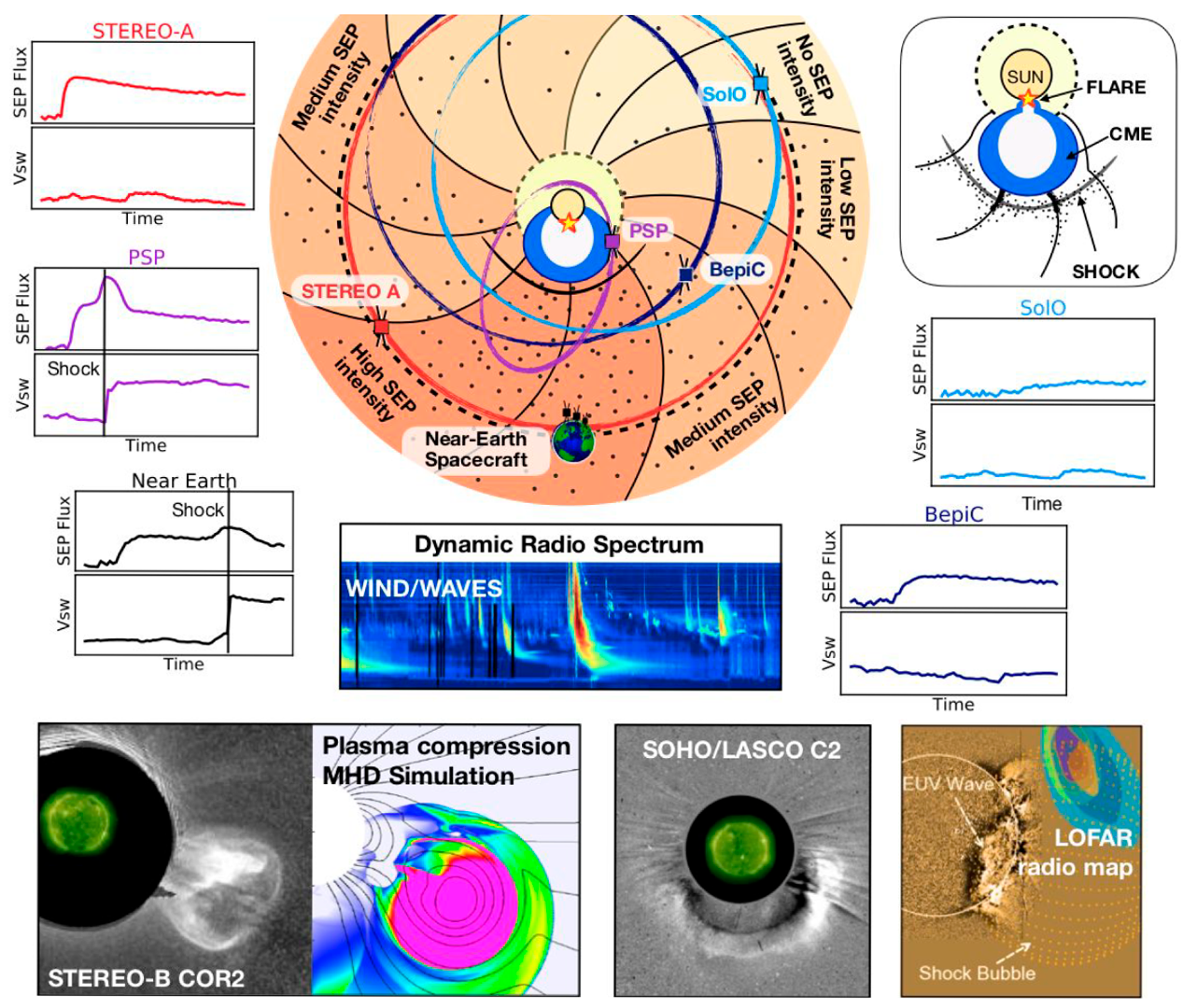SERPENTINE PROJECT DATA CENTER
The Solar EneRgetic ParticlE aNalysis plaTform for the INner hEliosphere (SERPENTINE) project will answer several outstanding questions about the origin of large gradual and widespread Solar Energetic Particle (SEP) events. SERPENTINE will generate five different catalogs of transient phenomena related with SEP events and a series of new level-3 data products for the Solar Orbiter and BepiColombo missions. These high-level data products will be provided to the community through the SERPENTINE Project Data Center website.


Catalogs
Catalogs contain different fields corresponding to physical quantities derived either from direct measurements or from the analysis of multiple data sets, presented in a tabular format. SERPENTINE provides the following catalogs:
Historical multi-spacecraft SEP events observed by the Helios missions and supporting observations near the Earth (e.g. IMP-8) will be analyzed and compiled here. Previous lists of multi-spacecraft SEP events observed by Helios will be extended to include all the events with flux enhancements for proton energies above 25 MeV. The primary data source will be the Helios/E6 instrument. New enhanced data analysis procedures will be derived from updated simulations of the E6 instrument response.
This catalogue contains multi-spacecraft solar energetic particle (SEP) events, which were observed with the new spacecraft fleet in solar cycle 25. The catalog comprises key SEP characteristics observed by five different observer locations as provided by Solar Orbiter, Parker Solar Probe, STEREO A, Wind and SOHO (at the Lagrangian point 1), and BepiColombo. The catalog focuses on large events, which show energetic proton increases above 25 MeV observed at least at two spacecraft. The catalogue provides not only key parameters of the proton event but also the same parameters for 1 MeV and 100 keV electrons, respectively.
In-situ shock events from previous solar cycles will be analyzed, using in-situ plasma and magnetic field data from Helios and IMP-8. With the input provided by the historical SEP event analysis, a selection of the most interesting SEP-related shock events will be compiled here.
In-situ shock events from the current solar cycle will be analyzed, using in-situ plasma and magnetic field data from new heliospheric missions (SolO, PSP). A selection of the most interesting SEP-related shock events will be compiled in this catalog.
3D triangulation techniques will be applied to multi-point coronographic and heliospheric imaging remote-sensing observations to model the 3D geometry of Coronal Mass Ejections (CME) flux ropes and CME-driven shocks in the solar corona. The combination of the observations with Potential Field Source Surface (PFSS) and Magnetohydrodynamics (MHD) models will allow to derive basic coronal shock parameters (physical and geometrical). SERPENTINE will develop and deliver a catalog of reconstructed coronal shock parameters in 3D (CME flux rope, shock and solar wind reconstruction and modeling plan).
Level-3 Datasets
Solar Orbiter Energetic Particle Detector (EPD) Level 3 data will be produced by the University of Alcalá (UAH) team in coordination with the instrument team, BepiColombo Solar Intensity X-ray and particle Spectrometer (SIXS) Level 3 data will be provided by the instrument PI institutions (University of Helsinki and University of Turku). These data sets, together with contributed data and plots produced by different SERPENTINE Work Packages (e.g. multi-mission or multi-instrument plots), will be delivered to the public through this database.
What is our goal?
The SERPENTINE project will answer several outstanding questions about the origin of Solar Energetic Particle (SEP) events and provides an advanced platform for the analysis and visualization of high-level datasets to benefit the wider heliophysics community. We exploit the unique opportunity provided by the unprecedented fleet of spacecraft currently in the inner heliosphere. The key data comes from the most recent European and US missions, i.e., Solar Orbiter (SolO), Parker Solar Probe (PSP) and BepiColombo (BepiC), which have opened completely new avenues to investigate SEPs, with supporting data from several current missions 1 astronomical unit (AU) as well as ground-based radio imaging and spectroscopic observations with the European Low Frequency Array (LOFAR). In particular, we will focus on unravelling the causes of currently poorly understood large gradual and widespread SEP events.
Go H2020 websiteKey questions
- What are the primary causes for widespread SEP events observed in the heliosphere, i.e., what are the roles of the SEP source location and size, CME and shock properties, the interplanetary magnetic field topology and geometry, and different modes of particle transport in this phenomenon?
- What are the shock acceleration mechanisms responsible for accelerating ions from thermal/suprathermal energies to near-relativistic energies in the corona and in the interplanetary medium?
- What is the role of shocks in electron acceleration in large gradual and widespread events? How does it relate to ion acceleration and what is its importance relative to flare acceleration?